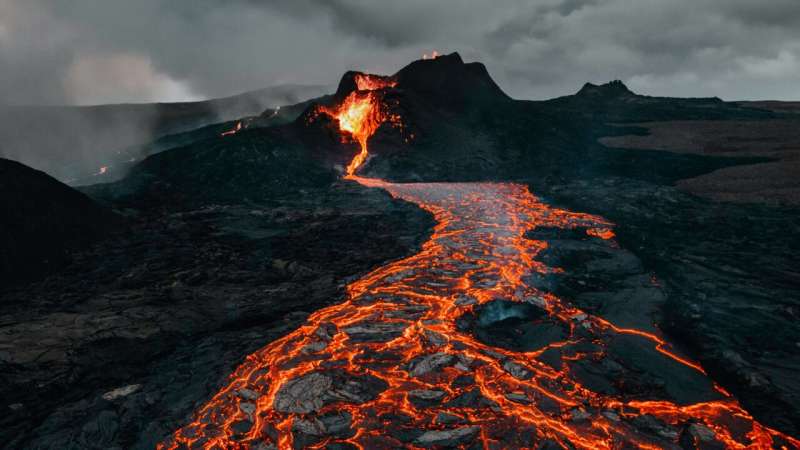Zinc isotopes of arc-related lavas reveal recycling of forearc serpentinites into subarc mantle

Serpentinite, formed by low-temperature hydrothermal alteration of mantle peridotite, is distributed in the lithospheric mantle at the bottom of the subduction slab (slab-serpentinite) and forearc mantle wedge above the subduction slab (mantle wedge serpentinite) in the subduction zone.
Since they usually contain a large amount of water, fluid-mobile elements (Cs, Rb, Sr, Ba, Pb, Li, etc.), and heavy B isotopes, using traditional geochemical means to distinguish the two different sources of serpentinite-derived fluids in the genesis of arc magmas is challenging.
A research team led by Zeng Zhigang from the Institute of Oceanology of the Chinese Academy of Sciences (IOCAS), in collaboration Prof. Chen Jiubin from Tianjin University, investigated zinc isotopes of subduction-related lavas from the Western Pacific and implications for crust-mantle recycling.
Their study, published in Journal of Geophysical Research: Solid Earth, provided an effective means to distinguish the contributions of slab and mantle wedge serpentinite-derived fluids to arc magmas, which is significant to understand the role of serpentinite in material recycling in subduction zones.
The researchers found that the arc-related lavas had lower δ66Zn values than those of the mid-ocean ridge basalts (MORB), whereas back-arc lavas displayed MORB-like δ66Zn values. Moreover, δ66Zn has a good correlation with proxies for fluid addition (87Sr/86Sr and Ba/La) and slab depths.
Since mantle melting and magmatic differentiation induces heavy Zn isotope enrichment in primary and evolved magmas, respectively, while melt extraction yields the limited Zn isotope fractionation in the mantle, lavas with low δ66Zn values thus potentially indicate the involvement of isotopically light fluids in their mantle sources.
In contrast to the heavy Zn isotope of the slab serpentinites, the forearc serpentinites are typically characterized by extremely light Zn isotope. Correspondingly, fluids released by forearc serpentinite dehydration have a significantly lower Zn isotopic composition relative to the mantle wedge.
Therefore, such forearc materials were likely dragged downward to subarc depths and released isotopically light Zn in fluids to modify the overlying mantle wedge, thereby producing low δ66Zn values in arc-related magmas. Beyond subarc depths, forearc serpentinites were broken down completely, so light Zn isotope fluids were absent.
Accordingly, the lavas from the back-arc basin displayed MORB-like δ66Zn values. It provided conclusive evidence for the hypothesis that forearc mantle wedge serpentinites could be involved in the subduction channel and transported into the subarc depth, and then dehydrate and modify the subarc mantle wedge.
More information: Zuxing Chen et al, Zinc Isotopes of the Mariana and Ryukyu Arc‐Related Lavas Reveal Recycling of Forearc Serpentinites Into the Subarc Mantle, Journal of Geophysical Research: Solid Earth (2021). DOI: 10.1029/2021JB022261
Journal information: Journal of Geophysical Research: Solid Earth
Provided by Chinese Academy of Sciences




















